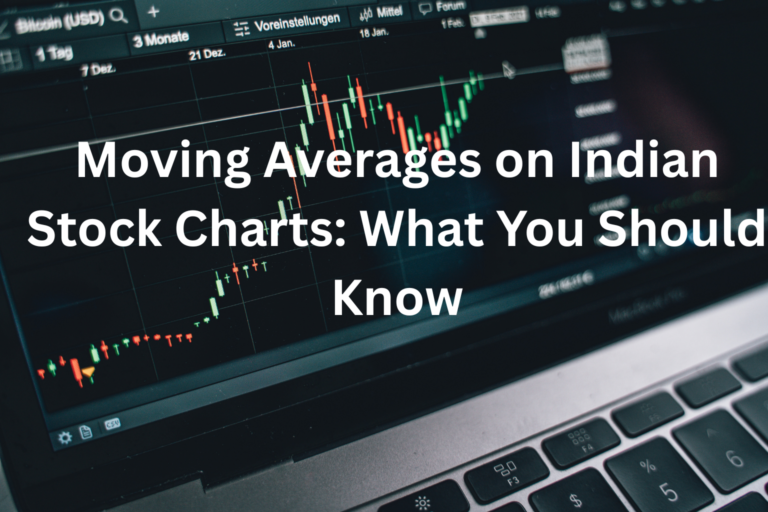RSI and MACD on Charts: Indian Market Applications
RSI (Relative Strength Index) and MACD (MovingAverage Convergence Divergence) are two of the most widely used momentum indicators in technical analysis. When used correctly, they can help Indian traders identify overbought/oversold conditions, trend reversals, and ideal entry or exit points.
This guide will show how to use RSI and MACD effectively on Indian stock charts, including what settings to use, how to combine them, and common mistakes to avoid.
1. What Is RSI?
RSI (Relative Strength Index) is a momentum oscillator that measures the speed and change of price movements.
-
Range: 0 to 100
-
Key Levels:
-
70+ = Overbought (possible sell signal)
-
30 or below = Oversold (possible buy signal)
-
-
Default Setting: 14-period
Use in India: Traders use RSI on NSE-listed stocks like TCS, Reliance, and HDFC for short-term swing or intraday trades.
2. What Is MACD?
MACD is a trend-following momentum indicator based on moving averages.
-
Components:
-
MACD Line = 12 EMA – 26 EMA
-
Signal Line = 9 EMA of MACD Line
-
Histogram = Difference between MACD and Signal Line
-
Key Signals:
-
MACD Line crossing above Signal Line = Buy
-
MACD Line crossing below Signal Line = Sell
-
Zero Line Cross = Trend Confirmation
Use in India: MACD is popular in positional trading of NIFTY 50 and mid-cap stocks.
3. Best Settings for Indian Market
For Indian stocks, the default settings usually work well:
-
RSI: 14 (can try 9 or 7 for faster signals in intraday)
-
MACD: 12, 26, 9
Tip: Avoid adjusting these settings too often unless you backtest first.
4. How to Use RSI in Indian Stock Charts
✅ Strategy 1: RSI Overbought/Oversold Levels
-
Buy when RSI < 30 and stock nears support
-
Sell when RSI > 70 near resistance zones
✅ Strategy 2: RSI Divergence
-
Bullish Divergence: Price makes a lower low, RSI makes a higher low → Buy Signal
-
Bearish Divergence: Price makes a higher high, RSI makes a lower high → Sell Signal
Example: Look for divergence in stocks like INFY or ICICIBANK on the daily chart.
5. How to Use MACD in Indian Stock Charts
✅ Strategy 1: Signal Line Cross
-
Buy when MACD crosses above Signal Line
-
Sell when MACD crosses below Signal Line
✅ Strategy 2: Zero Line Cross
-
Bullish Confirmation: MACD crosses from below to above the zero line
-
Bearish Confirmation: MACD drops below the zero line
Example: Apply this strategy to trending stocks like L&T or SBI on weekly charts.
6. Combining RSI and MACD for Better Accuracy
Using RSI and MACD together filters false signals and improves trade quality.
Buy Setup:
-
RSI is below 40 and turning upward
-
MACD gives a bullish crossover
-
Stock is near support or showing reversal candle
Sell Setup:
-
RSI is above 60 and turning down
-
MACD gives a bearish crossover
-
Stock is near resistance or showing weakness
Example: This setup works well in trending Indian stocks like HDFCBANK or BHARTIARTL.
7. Common Mistakes to Avoid
-
Using RSI/MACD in isolation without price action or volume confirmation
-
Overtrading based on small signal changes
-
Forcing trades in sideways markets where indicators often whipsaw
-
Ignoring timeframe alignment (RSI bullish on 15-min, but MACD bearish on 1-hour)
Conclusion
RSI and MACD are powerful tools for analyzing Indian stock charts, especially when used together. With practice and the right confirmation, these indicators can help Indian traders time their entries and exits with greater confidence. Always validate signals with chart patterns, trendlines, or support/resistance zones for improved accuracy.
FAQs
Q1. Which is better: RSI or MACD?
Both serve different purposes. RSI helps with overbought/oversold levels, while MACD is better for identifying trend changes.
Q2. Can I use RSI and MACD for intraday trading in India?
Yes, use lower timeframes like 5-min or 15-min, but always confirm signals with price action.
Q3. Do these indicators work in sideways markets?
They are less reliable in flat markets. Combine them with support/resistance or patterns for better results.
Q4. Which Indian stocks are good for RSI/MACD-based strategies?
High-volume stocks like RELIANCE, TCS, INFY, and HDFCBANK are ideal.
Q5. What platform is best to apply RSI and MACD in India?
TradingView India and Chartink offer free tools to apply and test these indicators.

